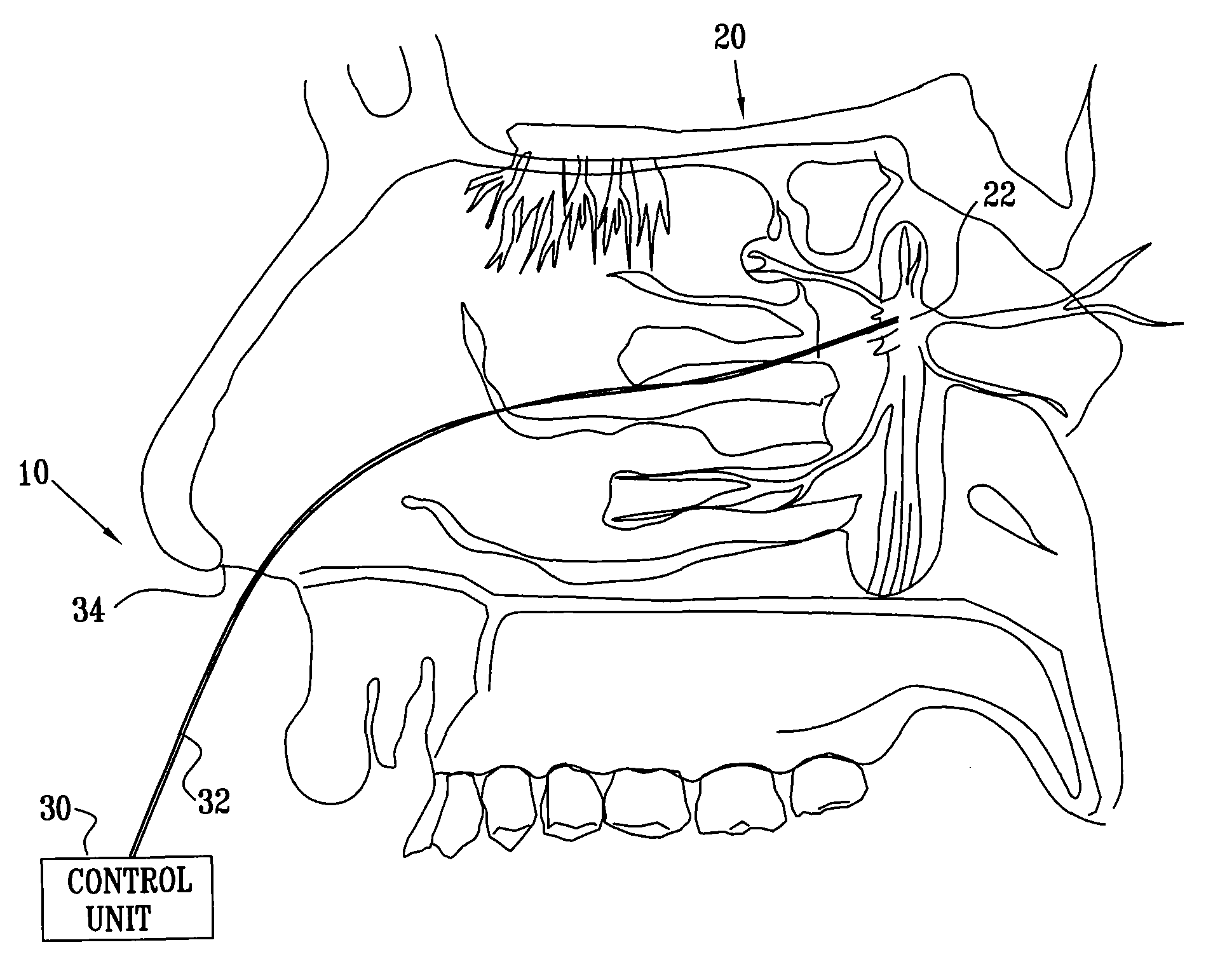Stimulation for treating brain events and other conditions
a brain event and stimulation technology, applied in the field of medical procedures and devices, can solve the problems of insufficient inducing a significant increase in the permeability of the blood-brain barrier (bbb), and achieve the effect of increasing the cerebral blood flow (cbf) and reducing the damage caused by the brain condition
- Summary
- Abstract
- Description
- Claims
- Application Information
AI Technical Summary
Benefits of technology
Problems solved by technology
Method used
Image
Examples
Embodiment Construction
[0202]FIG. 1 is a schematic pictorial view of an electrical stimulation system 10 comprising an implantable stimulator 12, for stimulation of a “modulation target site” (MTS), as defined hereinabove, such as a sphenopalatine ganglion (SPG) 22, in accordance with an embodiment of the present invention. In FIG. 1, a human nasal cavity 20 is shown, and stimulator 12 is implanted between the hard palate and the mucoperiosteum (not shown) of the roof of the mouth. Branches of parasympathetic neurons coming from SPG 22 extend to the middle cerebral and anterior cerebral arteries (not shown). Typically, one or more relatively short electrodes 26 extend from stimulator 12 to contact or to be in a vicinity of an MTS, such as SPG 22.
[0203] For some applications, stimulator 12 is implanted on top of the bony palate, in the bottom of the nasal cavity. Alternatively or additionally, the stimulator is implanted at the lower side of the bony palate, at the top of the oral cavity. In this instance...
PUM
 Login to View More
Login to View More Abstract
Description
Claims
Application Information
 Login to View More
Login to View More - R&D
- Intellectual Property
- Life Sciences
- Materials
- Tech Scout
- Unparalleled Data Quality
- Higher Quality Content
- 60% Fewer Hallucinations
Browse by: Latest US Patents, China's latest patents, Technical Efficacy Thesaurus, Application Domain, Technology Topic, Popular Technical Reports.
© 2025 PatSnap. All rights reserved.Legal|Privacy policy|Modern Slavery Act Transparency Statement|Sitemap|About US| Contact US: help@patsnap.com



